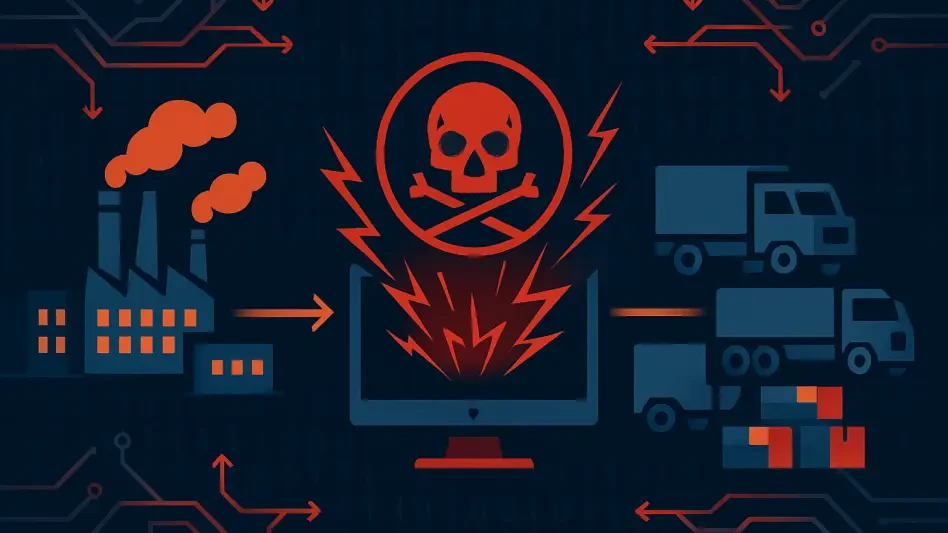In a digital landscape where interconnected systems underpin business operations, the recent security breach at Salesloft’s Drift platform stands as a chilling reminder of the vulnerabilities lurking within supply-chain networks. This incident, orchestrated by a sophisticated threat group identified by Google as UNC6395, has not only compromised sensitive data across hundreds of organizations but also sparked intense scrutiny over the adequacy of security measures in cloud-based environments. Over a critical 10-day period in mid-August, attackers exploited unauthorized access to Salesloft’s GitHub account, which had been infiltrated months earlier, to launch a widespread data theft campaign. The fallout has left customers grappling with uncertainty and raised pressing questions about transparency and trust in technology integrations. As the investigation unfolds, this breach serves as a pivotal case study in the escalating risks of supply-chain attacks and the urgent need for robust defenses in an increasingly connected world.
Unpacking the Breach: A Multi-Stage Attack
Initial Infiltration and Prolonged Access
The complexity of the attack on Drift began with the undetected compromise of Salesloft’s GitHub account, a breach that threat actors exploited as early as March before launching their full-scale operation. For months, these attackers, identified as UNC6395, maintained a stealthy presence within the system, downloading content from multiple repositories and setting up workflows to deepen their foothold. They even added a guest user to facilitate their activities, demonstrating a calculated approach to infiltration. This prolonged access, which went unnoticed for an extended period, points to significant gaps in monitoring and access control mechanisms. The ability of the attackers to operate within the environment for so long before striking highlights the challenges organizations face in detecting persistent threats. Such lapses underscore the importance of real-time threat detection and stringent access policies to prevent adversaries from establishing a long-term presence in critical systems.
Escalation to AWS and Data Theft
Once entrenched in the GitHub environment, the attackers escalated their operation by gaining access to Drift’s Amazon Web Services (AWS) infrastructure, a move that amplified the scope of the breach. Within this cloud environment, they obtained OAuth tokens linked to Drift customers’ third-party technology integrations, effectively unlocking a treasure trove of sensitive data. Using these stolen tokens, the threat group extracted information through Drift’s connections with various external services, impacting a broad swath of users across numerous organizations. The exact mechanisms of how access was achieved and why such critical tokens were vulnerable remain unclear, adding to the mystery surrounding the incident. This stage of the attack illustrates the cascading risks inherent in interconnected systems, where a single compromised element can jeopardize an entire network. It also emphasizes the critical need for secure storage and management of authentication credentials in cloud-based platforms to thwart such exploitation.
Response and Implications: Navigating the Aftermath
Salesloft’s Containment Efforts and Challenges
In the wake of the devastating breach, Salesloft moved swiftly to contain the damage by taking the Drift platform offline temporarily and implementing measures to bolster security. A key step included rotating all centrally managed OAuth keys to prevent further unauthorized access, though customers managing Drift connections via API keys were advised to revoke these directly with third-party providers. While the core Salesloft platform remained uncompromised and connections with Salesforce were restored, the timeline for Drift’s return to full operation remains uncertain. Initial communications from the company suggested the impact was limited to Drift users integrated with Salesforce, but this was later contradicted by Mandiant, Google Cloud’s incident response firm, which confirmed a broader compromise. This discrepancy has fueled criticism over the lack of clear and timely information, leaving affected customers struggling to assess risks and implement protective measures in a rapidly evolving situation.
Transparency Issues and Trust Erosion
Beyond the immediate technical response, the incident has cast a harsh spotlight on Salesloft’s transparency, or lack thereof, in handling the crisis, further eroding customer trust. Analysts, such as Paddy Harrington from Forrester, have pointed out that the company appears to be withholding critical details about the breach, including how initial access was gained and the full extent of the stolen data. This opacity has hindered organizations from fully understanding their exposure and taking appropriate action. Experts like Nathaniel Jones from Darktrace have acknowledged the containment steps as necessary but stress that more information is needed to evaluate the root causes of the breach. The prolonged undetected presence of attackers suggests deeper flaws in security practices, and the resulting damage to Drift’s reputation may be difficult to repair. Some industry observers even suggest that a rebranding or complete overhaul of the platform might be required to restore confidence among users and partners alike.
Lessons Learned from a Supply-Chain Crisis
Reflecting on this incident, it becomes evident that the breach at Drift was not merely a failure of one company but a stark warning about the broader vulnerabilities in supply-chain ecosystems that had been exploited with devastating precision. The sophisticated multi-stage attack by UNC6395 revealed how attackers could target a single weak link to access interconnected systems, impacting hundreds of organizations in a matter of days. Salesloft’s efforts to contain the damage, while necessary, were overshadowed by communication missteps that left lingering doubts among customers. Moving forward, the focus must shift to actionable improvements, such as implementing stricter access controls, enhancing real-time monitoring, and fostering greater transparency during crisis management. This breach also calls for industry-wide collaboration to strengthen supply-chain security, ensuring that integrated platforms are fortified against similar threats. As investigations continue, the lessons from this event should drive organizations to prioritize proactive defenses and build resilient systems to safeguard against the ever-evolving landscape of cyber risks.








